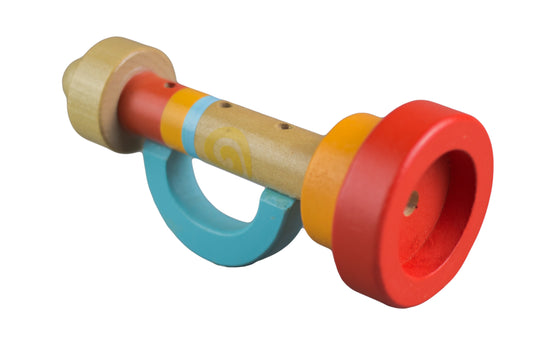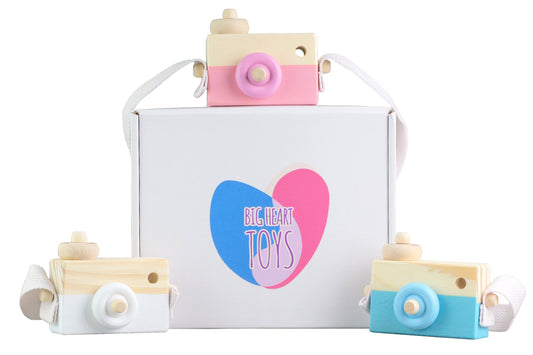It would be wonderful to think that all children are always happy-go-lucky and can enjoy the leisurely life of being a child, but as parents, we know that this simply isn’t the case. Unfortunately, sometimes the smallest people are the ones carrying the biggest feelings.
Our babies have problems too, and, big or small, they have feelings about these problems. At times, it can seem silly when they get upset because we won’t let them put their shoes on the wrong feet, but there’s a developmental reason for this. Children don’t have the same skills we do to regulate their emotions yet.
Why exactly do children have such big reactions and intense feelings? How can we help them work through this?
Understanding Why Children Have Intense Feelings
Children experience some of the same stressors and struggles as we do. However, we can’t expect children to manage these feelings as well as we do.
Let’s be honest: as adults, we struggle to manage things like this at times, too! Due to their lack of life experience and underdeveloped nervous systems, the feelings children experience may feel very heavy and overwhelming.
A child’s reaction to intense emotions may result in undesired behaviors, but there is a big difference between behavioral outbursts and overwhelming emotions. Knowing this can help us as parents to react better to the situation at hand.
The same nervous system that evokes the well-known fight or flight response is the one that determines how we react when faced with stressful situations. As our brains process things that occur, our bodies physically react to these emotions.
Physical Reactions to Intense Feelings
These physical reactions can include but are not limited to:
- Butterflies in your stomach
- Changes in heart rate
- Headaches
- Trouble breathing
Now, imagine being a young child and experiencing these symptoms. Pretty scary, right? When things occur that scare or worry young people, their nervous systems react the same way ours do. The only difference is that they might not have an adult’s knowledge of what is causing the sensation.
While we may be able to recognize shortness of breath as an effect of being scared, this reaction can feel terrifying to a baby. We can comfort our children and soothe them as best we can, but the better we help them understand how to be in tune with their emotions, the stronger they will be.
The Importance of Verbalizing Feelings
A child who learns the skills to manage emotions will be better equipped to verbalize when they feel this way. Children can express their need for help, control their reactions, and resolve issues quickly and more efficiently. Our best bet for teaching these skills is to model the behavior ourselves.
When we feel overwhelmed or upset, we can talk about this to our children and explain what we’re feeling, why we’re feeling that way, and how we’re tackling those sensations. It’s a great way to use real-life examples and demonstrate coping skills that our children can relate to in their own lives.
We might say, “Mommy is overwhelmed with everything going on this morning. It’s making me feel angry, even though I don’t want to be mad. I’m going to take a minute to myself and take some deep breaths to feel more ready to tackle the day.”
All at once, we help them understand and recognize our needs while demonstrating how they can express their own needs when they have these feelings. A quick chat can go a long way.
What To Do When the Feelings Get Too Big
Other than behavior modeling, what can we do to help our children when they are in the heat of the moment?
We can take a few steps to calm them down, allow them to feel our love and support, and plan with them for next time:
Validation
The first (and possibly the most important step) is to validate our children. Simply letting them know that we hear them and understand they feel these emotions can go a long way.
Children demonstrate feelings in a wide variety of ways. Some act out, while others withdraw. You know your child best! When seeing signs of intense feelings, we can help them feel they’re not alone.
When validating their feelings, it’s best to keep this solely about the child and their emotions at hand. Allow them to feel understood and maybe offer a hand to hold or a listening ear. Action steps can come later.
Some things you can say to put your child at ease:
- “I see that you feel upset right now. I know this situation is stressful, and I would be stressed, too.”
- “I see that you feel down with what’s happening right now. Anyone would feel sad in this situation! Can I sit with you until you’re ready to talk about it?”
- “Wow, what an upsetting situation. That makes me feel unsettled, too.”
Labeling their emotions when they may not recognize them helps them see that what they are feeling is real. It can be beneficial to offer a helping hand, such as sitting with them, giving them a hug, or offering to talk. Otherwise, this is a time to keep the questions to a minimum and allow them to feel their feelings.
Think on Their Level
Let’s take ourselves out of the adult world and think like a child. Fears, disappointment, insecurities, and intense feelings are difficult for us to manage. We know how overwhelming it must feel for someone when experiencing this for the first time.
Identify the source of their feelings. What’s going on in their lives to make them feel so strongly? Can we relate it to something we feel at times?
Often, it’s hard to remember how children perceive different events and their subsequent emotions. Behavior modeling tools like instructional e-books can guide children through complex social situations in the form of a story.
Whether it’s about how to deal with teasing or follow instructions during a fire drill, e-books turn lessons into relaxing bedtime stories.
Make a Plan To Stop and Regulate
Sensory-based tasks can help children calm down and regulate emotions. You can have a few of your child’s favorite tactile toys ready to provide calming sensory stimulation.
Having a task with a sense of purpose (like building a sand castle in a Kinetic Sand Box) is a great way to calm down the nervous systems and regulate feelings.
Handy on-the-go items like a Weighted Gel Maze provide the assistive therapy benefits of deep pressure stimulation and the powers of fidget toys. This 2.2-pound toy can go in the car, pediatrician waiting room, or classroom.
Mountain Breaths
Breathing exercises are one easy-to-remember coping skill. There are many types of breathing exercises suitable for children, but today we’re going to talk about “Mountain Breaths.” This is a simple practice that works well to calm nerves.
How to do it:
- Step one: Climb the mountain. Use one hand to go in an upward slope forming one side of the mountain. As your hand “climbs the mountain,” you and your child breathe in through the nose.
- Step two: Stop and see the views. Stop your hand at the “top of the mountain.” Place it over your eyes as if you’re gazing at the view. As you look, you and your child hold your breath for a moment to work on control.
- Step three: Slowly climb down the mountain. As your hand goes down in the opposite direction, slowly exhale through the nose or mouth.
This easy practice gives a visual to young children, allows for purposeful breathing, and asks them to complete a task that doesn’t feel overwhelming. When emotions are getting the best of them, a couple of mountain breaths may be just the trick to get them back on track or ready to talk about what’s going on.
Physical Exercise
Activity-based coping skills can be beneficial when your child has a lot of pent-up energy. If their behavior resembles aggression or frustration, sometimes putting a goal to that energy resets their focus.
A set number of jumping jacks, stomping the ground, or push-ups may get all that energy out and maybe even spark a few giggles!
Mindfulness and the Five Senses
When children’s emotions heighten, there are some tips to build emotional regulation skills. Focusing on each of the five senses (sight, hearing, taste, touch, and smell) to direct them to more pleasant feelings is a good practice.
Ask them to name one thing they can see, hear, touch, or smell. You can also give your child a healthy snack, like an apple slice. Ask them to describe it in detail as they eat it.
Reflect and Refocus
Once they are feeling back on track, we can model the practice of reflecting and refocusing. This can be a difficult thing to teach children, as reflection doesn’t always come naturally. Visuals can help them to identify how they felt and acted to set a plan for next time.
The best time to do this is once these feelings are soothed and they are at ease. It’s true for sports and emotions — practice is key.
Guiding your child through a few set self-soothing practices will ensure they are ready the next time intense feelings pop up. You may need to try out new techniques from time to time as your child’s needs and life situations change.
Try It Out!
Next time your little one is experiencing emotions too big to handle, remember these steps and try them out: Validate, relate, regulate, cope, and reflect.
These five steps may look different from family to family. You will quickly find what methods work best for you and will be well on raising an emotionally-aware child.
Sources:
4 Ways to Help Children Manage Emotions | McLean Hospital
Diaphragmatic Breathing Exercises & Benefits | Cleveland Clinic
Tips and Ideas for Making Visuals to Support Young Children with Challenging Behavior
The Limbic System | Shippensburg University
Understanding and Managing Emotions | Children and Teenagers
What is Deep Pressure Stimulation? Touch Therapy for ASD | AppliedBehaviorAnalysisEdu






